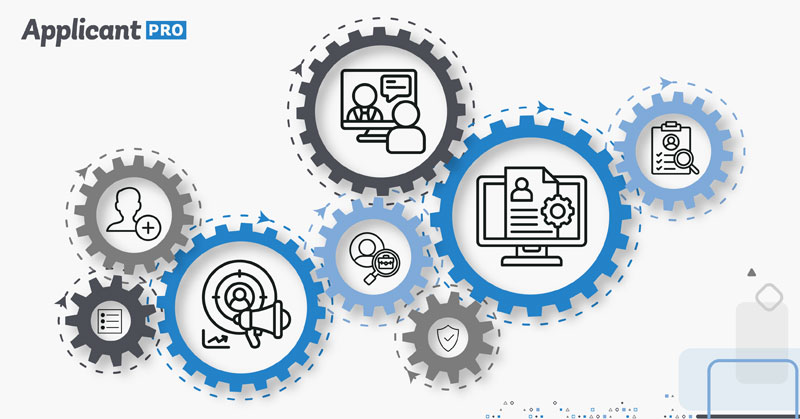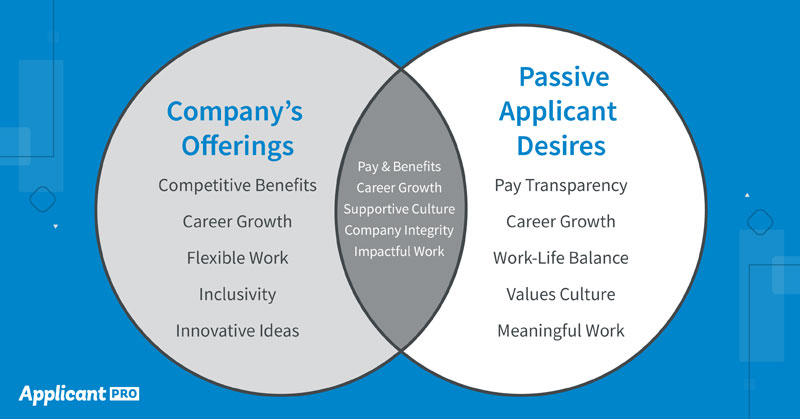
3 Secrets to Hiring for Diversity
I often get asked, "how do you hire more diversity?" Generally these types of questions come from the fact that ApplicantPro has a high percentage of women when compared to most SaaS technology companies, and because of my extensive work on Women Tech Council. I always appreciate being asked this, because it shows a genuine willingness by those people to change. I know how difficult change can be for an organization, so any expression of "we need to do things differently" is a good thing. The good news is that there isn't really any "secret" to hiring more diversity. The key is to have a more open mindset in your approach.
Understand how women and minorities might approach job hiring differently
Throughout my career, when hiring diversity is suggested, sometimes others in the organization assume that must mean the organization is somehow lowering its standards to hire women and minorities. We must resist this tendency, because it's simply not helpful. A better approach is to understand how women and minorities might approach job hiring differently.
Tara Mohr wrote an incredibly insightful article in Harvard Business Review about women's approach to applying for jobs. It's incredibly interesting to see that women tend to approach job applications using a "following guidelines" approach, whereas men tend to feel that the guidelines are much more negotiable. Mohr notes:
- Women don't want to waste their time and energy if they don't feel they meet the qualifications
- Women are not as informed about the hiring process. In other words, they might not realize that job requirements are negotiable.
- In summary, women tend to take job requirements as "real" requirements.
Anyone who has hired knows that some job posting are more akin to a "wish list." I've had a few situations in other companies where I've posted a job ad, hoping to find the unicorn that met all of the job requirements. But truth be told, I'd be happy to find the person with 80% of that experience.
I believe we can use this understanding of how women approach hiring to think outside the box about posting job ads to attract more diverse candidates. Here are some ideas:
Get More Applicants from Job Boards
Don't post and pray. Get this exclusive FREE cheat sheet and take active steps to dramatically increase the results you get from your job board posts.
1. Can you eliminate requirements?
Think carefully about every job requirement you list in your job ad. Imagine a job applicant who is reading your job ad like a checklist - do they meet each and every requirement? If you can remove any of those requirements, then do so. If any of the job requirements are nice to have but not critical, then explicitly say so.
Think carefully about every job requirement you list in your job ad.
Here's a great example: a lot of software programming jobs require that software engineers spend some time contributing to open source software. So they often list that as a job requirement. Well, if you've ever done any research into gender and programming, you learn that women sometimes find it challenging to engage in the open source programming community due to perceived hostility they have experienced. And in truth, engaging in open source development is a "nice to have" but not critical for most developer jobs. So if you are listing "must participate in open source community" as a job requirement, it may create an unwanted barrier to women software engineers applying.
A harder example is where you want to describe what your company does in the job description. While I understand why you would want to do that, it may not be necessary for every job description. Or perhaps you can think of a broader way of describing your company to job candidates. For example, ApplicantPro doesn't put the word "SaaS" in an entry-level job description, even though ApplicantPro is a true SaaS company. I know that few job applicants will understand what that means and that that is a term they can learn after they join the company. So think from the applicant's perspective whether there are terms that may be confusing or create perceived barriers to applying. You could even ask a friend that is not in your industry to get objective feedback on a job description.
2. Can you train for the job?
Reflect on the roles in your organization. With a little more effort, there may be aspects of the job that you can train (or perhaps the entire job is trainable). Or perhaps you are already training people into job roles. Be willing to explicitly say that training is available for certain job roles in your job ad. Showing that you are willing to invest in someone can go a long way toward a job candidate viewing your company in a good light.
Showing that you are willing to invest in someone can go a long way toward a job candidate viewing your company in a good light.
This may force you to filter candidates during the hiring process in a different light. Instead of using a list of work experiences as hiring qualifications, you might need to think about characteristics that will allow that person to learn what is needed. This is where assessments can be extremely helpful. If you know the characteristics of top performers in your company for a certain role (e.g., a sales role, data entry, customer service), an assessment can help you identify characteristics beforehand so that you know that person has potential for success in that particular role with the right training.
3. Can a person see her/himself as successful in that role?
Write your job ad in a way that is accessible, where someone can see that they will be set up for success in that role. List skills that will contribute to that success, not just previous experience or education. For example, at ApplicantPro, we have a great support team who spends the time needed to deeply understand our product and understand our customer. Very rarely can I look at a previous job to determine whether someone can learn our product and customers, because they are completely different products and customers. So the skills I am looking for are self-starters, quick learners, and troubleshooting skills. By describing the "person" we are looking for, people are able to self-identify themselves as matching or not matching that person. This is a much easier and more accessible exercise than trying to go through a checklist of previous work-related experiences.
So hiring for diversity is more about giving yourself permission to think differently about how job descriptions are typically written. You can make your company stand out by moving away from traditional checklist type of job descriptions to ones that have less job requirements, more ability to learn on the job, and more skills/characteristics based so that people can truly see themselves as successful at your company. Imagine a world where "life long learners wanted" was the job description.

Get More Applicants from Job Boards
Download this exclusive guide to improve applicant flow from job boards.
Share this article
Related Articles

Elevate Your HR Strategy with ApplicantPro's Full-Suite of HR Tools
Simplify HR with ApplicantPro's all-in-one solution. Our customizable tools streamline recruitment, onboarding, payroll, and benefits management for growing businesses.

Unlocking the Hidden Talent Pool: How to Attract Passive Candidates
Boost your hiring strategy! Learn how to attract passive candidates with ApplicantPro's expert tips, insights, and stats for a stronger talent pipeline.

What is an ApplicantPro Market Analysis?
Discover how our Market Analysis can help you stand out from the competition and attract top talent. From competitor pay reviews to job-seeker personas, our Recruitment Marketing experts provide actionable insights to improve your hiring process.